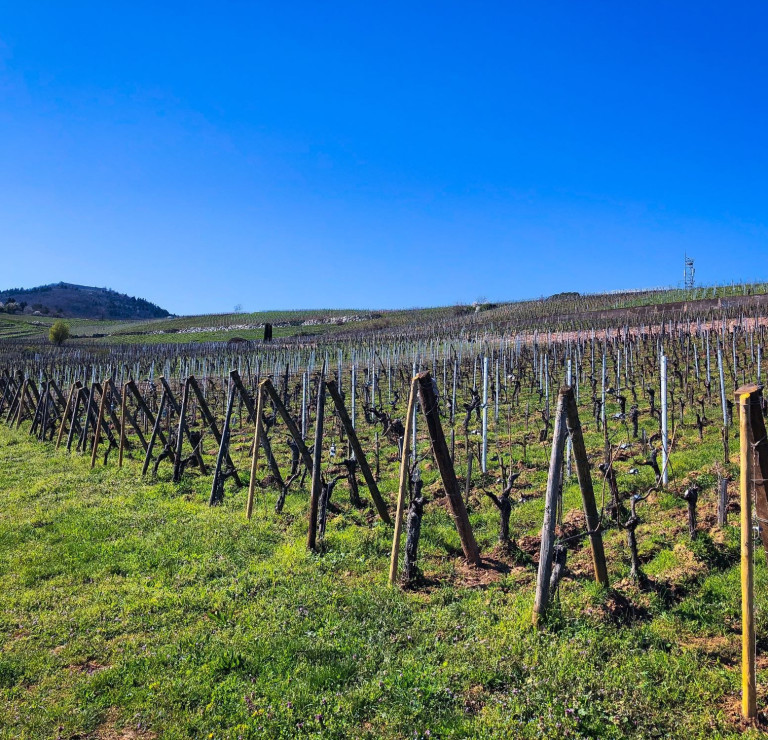
Technical presentation
| Bottling : | August 2020 |
|---|---|
| Acquired alcohol : | 13.4° |
| Residual sugar : | 25.9 g/l |
| Total acidity : | 2.5 g/l H2SO4 / (3.8g/l Tartrique) |
| pH : | 3.9 |
| Yield : | 40 hl/ha |
| Optimum tasting : | 2024-2049+ |
| Average age of vines : | 68 years |
| Grape variety : | Gewurztraminer |
| Terroir : | Grand Cru Hengst |
| Sweetness index : | 3 |
| Soil : | Calcareous Marl from the Oligocene period |
Description of the wine Gewurztraminer Grand Cru Hengst 2019
The Gewurztraminer is the lesser represented grape variety on the Clos-Saint-Urbain. A small 0.5 ha produces around 1500 bottles every year. The Rangen has the ability to force its taste and character on the aromatic Gewurztraminer, which alone is already a tour de force, and also produces a relatively dryish style of wine. Almost every vintage, it is the Gewurztraminer Rangen that ferments the most vigorously. The steep south facing slope of the Rangen are located at the end of a cooler valley and at a relatively high altitude for Alsace vineyards (over 350m elevation). Gewurztraminer doesn’t like these conditions, and that explain its rarity on this Grand Cru. However, the river Thur, which runs just below the slopes of the Rangen, moderate the climate and allows for the production of this grape variety if planted at a close distance from the river. The 2019 vintage was harvested much later than most other Gewurztraminers but fermented fast, finishing almost dry.

Tasting notes
02/2021 : Pale gold colour. The nose is pungent and powerful, showing lots of spices (pepper), dry herbs and flinty aromas. The palate stands out with a harmonious texture. It is obviously a powerful wine but power isn’t the best way to describe it. It actually is elegant and refined, with a beautiful acidity and tannin combination that make it seem almost completely dry. The finish shows vitality but also feels relaxed. A wine with a clear cooler climate influence in 2019 !

The Hengst Grand Cru of Wintzenheim
The Hengst was first mentioned in the 9th century in an endowment of the Murbach Abbey. The lord of Haut Landsbourg as well as the bailiff of Kaysersberg shared the feudal rights up to the Great Revolution, whilst various noble families, abbeys and the bourgeoisie of Colmar exploited important parcels.